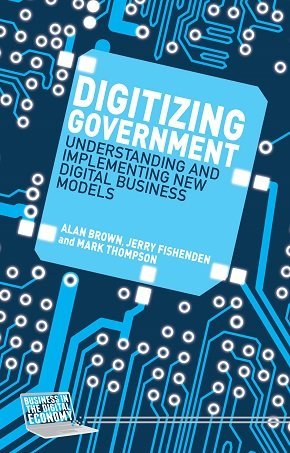Revolutionising digital public service delivery
Public sectors across the world are attempting a transition away from closed, top-down, bureaucratic, and paper-based transactional models
Public sector agencies across the world are attempting a transition from closed, top-down, bureaucratic, and paper-based transactional models towards online, integrated digital offerings that encourage a new kind of interaction between citizens and the state.
This journey towards “digital public service delivery” appears to be reaching a critical point. The confluence of citizen demand for greater speed and more transparency in service delivery is being met with increased appetite within the public sector to deliver services in more innovative ways. This is happening through the use of open technologies; diversity of delivery agents including increased involvement of smaller companies; and more agile delivery practices to demonstrate meaningful progress earlier in a project’s lifecycle.
The context within which this digital public services revolution is occurring is the much broader transformation taking place in our personal lives and how we conduct business – driven by a constant stream of digital technology changes, optimised production practices, and flexible global delivery models.
There has been a sea change in the way consumers expect to use technology - it has become cheap, easy to use, consumable like a utility, always on, mobile, and open; working seamlessly with everything else. We have become sophisticated consumers and users of such technologies, and of the flexibility and freedoms these enable. Consequently, there is an increasing demand to see these same benefits realised in public services as everywhere else.
One driver of this digital transformation has been the use of technology platforms, whether these are proprietary, like Apple's iOS, or more open, like Google's Android. Such platforms provide standardised environments that stimulate whole ecosystems of businesses to build products and services, attracted by the volume of demand that these platforms generate. Platforms can drive astonishing rates of innovation, investment, choice and competition.
Digitizing government
This is an excerpt from Digitizing Government: Understanding and implementing new digital business models.
Click here to download a longer excerpt from the book.
Platform thinking
However, until recently very little of this platform-based thinking – and its associated benefits – have been taken up within our public services. The contrast between these emerging business models based on digital platforms and our public services is stark - the latter are underpinned by idiosyncratic processes, point solutions, top-down assumptions about users’ needs, and out-dated systems.
The challenge is to build an understanding among public officials of the radical impact that common service platforms might have on their operations and organisational models. There continues to be a general lack of awareness of how digital technology changes public service design to deliver agile, easy-to-use, consumerised services at lower cost and in a way that emulates our daily experiences in the private sector.
This lack of understanding – and the missed opportunity for public services – crystallises the need to build a common view of what the transition to digital public service delivery actually involves. Most importantly, digital technology needs to impact and influence the design and operation of public services as they are being developed and evolved, rather than being applied merely as a means of automating an existing process.
Read more about digital government
- Interview: Ed Vaizey MP talks digital economy and digital skills
- Interview: Government digital chief Mike Bracken on the next five years
- Government must be a platform entrepreneur to deliver 'digital 2.0'
- Going digital at the Ministry of Justice
- Government’s digital strategy is progressing, but inconsistently
Digital culture
The UK has a renewed focus on making digital part of the culture of the public sector at both central and local government. This will entail a revolution in the design and operation of public services that can capitalise upon developments in technology and the emergence of digital organisations to create services that better meet citizens’ needs, develop channels that offer efficiency and increase inclusion to all citizens, and re-invent service supply chains to deliver faster, cheaper, and more effectively.
A variety of “online” approaches have been tried before and yet have largely failed. This time, delivery and execution must be on a much broader front than technology alone. There are proven models that the public sector needs to adopt – most fundamentally, the move to a digital, 21st century organisation. This will require cultural, capability and leadership improvements across people, communities, and clients; organisation and delivery; platforms and interfaces; infrastructure and technology.
This digitisation of public services needs to be built on the application of open technical standards and platform-based architectural principles. Sustainable and meaningful reform and improvement will only be achieved when there is an equal relationship between internal organisational and digital services transformation – significantly improving our public services in the digital economy.
This is an excerpt from Digitizing Government: Understanding and implementing new digital business models, which is published on 3 December 2014.
Click here to download a longer excerpt from the book.
 Alan W. Brown is Professor of Entrepreneurship and Innovation in the Surrey Business School at the University of Surrey. He previously worked in strategic IT leader roles in industry.
Alan W. Brown is Professor of Entrepreneurship and Innovation in the Surrey Business School at the University of Surrey. He previously worked in strategic IT leader roles in industry.
 Jerry Fishenden was recently interim deputy CTO for the UK government. He has previously been CTO for Microsoft UK, the City of London financial regulator, the UK Parliament and the National Health Service.
Jerry Fishenden was recently interim deputy CTO for the UK government. He has previously been CTO for Microsoft UK, the City of London financial regulator, the UK Parliament and the National Health Service.

Mark Thompson is strategy director at Methods Group; senior lecturer in information systems at Cambridge Judge Business School; visiting professor at Surrey Business School; and recent board member of TechUK.
Read more on IT for government and public sector
-
![]()
A local government GDS might work - but only on top of standard technology
-
![]()
Scottish government readies cloud platform to aid public sector take-up of AWS and Microsoft Azure
-
![]()
UK government promises £1bn savings from latest digital strategy
-
![]()
Six strategic plays for UK government IT initiatives and their implications for policy




_searchsitetablet_520X173.jpg)




